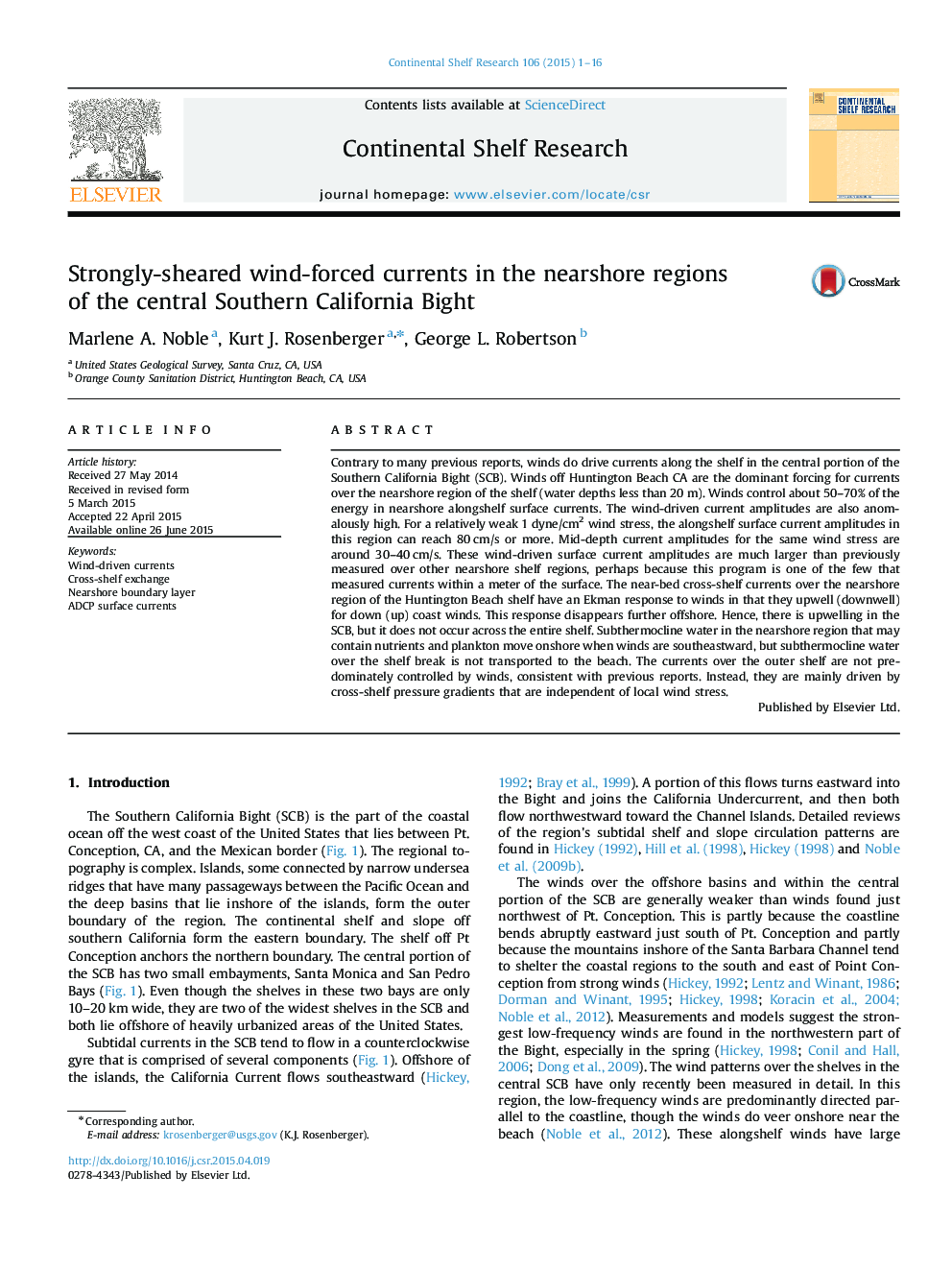| Article ID | Journal | Published Year | Pages | File Type |
|---|---|---|---|---|
| 4531661 | Continental Shelf Research | 2015 | 16 Pages |
Abstract
Contrary to many previous reports, winds do drive currents along the shelf in the central portion of the Southern California Bight (SCB). Winds off Huntington Beach CA are the dominant forcing for currents over the nearshore region of the shelf (water depths less than 20Â m). Winds control about 50-70% of the energy in nearshore alongshelf surface currents. The wind-driven current amplitudes are also anomalously high. For a relatively weak 1Â dyne/cm2 wind stress, the alongshelf surface current amplitudes in this region can reach 80Â cm/s or more. Mid-depth current amplitudes for the same wind stress are around 30-40Â cm/s. These wind-driven surface current amplitudes are much larger than previously measured over other nearshore shelf regions, perhaps because this program is one of the few that measured currents within a meter of the surface. The near-bed cross-shelf currents over the nearshore region of the Huntington Beach shelf have an Ekman response to winds in that they upwell (downwell) for down (up) coast winds. This response disappears further offshore. Hence, there is upwelling in the SCB, but it does not occur across the entire shelf. Subthermocline water in the nearshore region that may contain nutrients and plankton move onshore when winds are southeastward, but subthermocline water over the shelf break is not transported to the beach. The currents over the outer shelf are not predominately controlled by winds, consistent with previous reports. Instead, they are mainly driven by cross-shelf pressure gradients that are independent of local wind stress.
Related Topics
Physical Sciences and Engineering
Earth and Planetary Sciences
Geology
Authors
Marlene A. Noble, Kurt J. Rosenberger, George L. Robertson,
